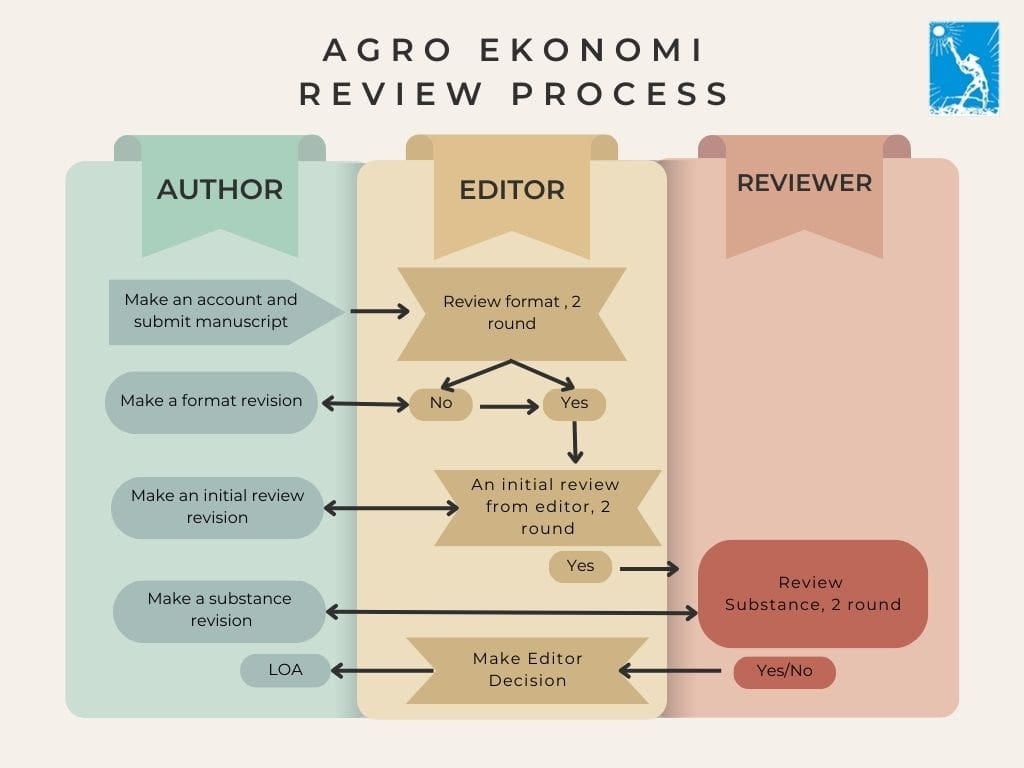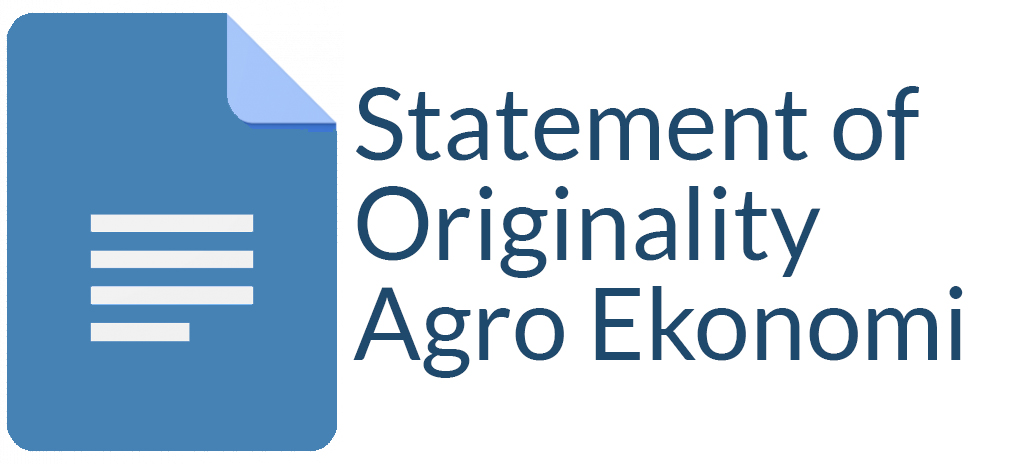The Efficiency of Melinjo (Gnetum gnemon L.) Chip Supply Chain in Bantul District, Province of Yogyakarta
Sunendar Sunendar(1*), Dwidjono Hadi Darwanto(2), Irham Irham(3)
(1) Master Students of Agribusiness Management, Faculty of Agriculture, Universitas Gadjah Mada
(2) Faculty of Agriculture, Universitas Gadjah Mada
(3) Faculty of Agriculture, Universitas Gadjah Mada
(*) Corresponding Author
Abstract
Melinjo chip is one of the typical foods in Yogyakarta made of melinjo nuts. The production center of melinjo chip is located in Banguntapan and Pajangan Sub Districts, Bantul District. The purpose of this study is to determine the efficiency of the supply chain measured with transportation model analysis. The number of respondents in this research was 50 producers of melinjo chip in Bantul District, taken by simple random sampling method. While the snawball sampling method was used to get 5 (five) collector traders, 5 (five) large traders and 26 (twenty six) melinjo chip retailers that taken by following melinjo chip sales distribution from the producer to Market of Piyungan, Demangan, Kotagede, Sentul, Beringharjo, Bantul, Legi, and Magelang. The supply chain actors of melinjo chip are melinjo farmers, melinjo chip producers, collecting traders, large traders, retailers, consumers, packaging producers, production workers, haulers, and firewood providers. The analysis of transportation model with minimum cost illustrates that Wirokerten Village from Banguntapan Sub District allocate the production of melinjo chip to Market of Beringharjo and Piyungan, while Potorono Village allocates the to Market of Demangan. Sendangsari and Triwidadi Village from Pajangan Sub District allocate the production of melinjo chip to Market of Beringharjo, while Guwosari Village allocates to Market of Beringharjo, Bantul, and Legi.
Keywords
Full Text:
PDFReferences
Aisyah, M. N., Nugroho, M. A., & Sagoro, E. M. (2013). Pengaruh Technology Readiness Terhadap Penerimaan Teknologi Komputer Pada Umkm Di Yogyakarta. Jurnal Economia, 10, 105–119.
Aliudin, & Anggraeni, D. (2012). Nilai Tambah Emping Melinjo Melalui Teknologi Produksi Konvensional di Desa Menes Kecamatan Menes Kabupaten Pandeglang. AGRIKA, 6(1), 23–33.
Budiman, C., Massie, J., & Wullur, M. (2015). Identifikasi Desain Jaringan Manajemen Rantai Pasok Kopra di Kota Manado. Jurnal Riset Ekonomi, Manajemen, Bisnis Dan Akuntansi, 3(2), 65–76.
Cristoporus, & Sulaeman. (2009). Analisis Produksi dan Pemasaran Jagung di Desa Labuan Toposo Kecamatan Tawaeli Kabupaten Donggala. Agroland, 16(2), 141–147.
Furqon, C. (2014). Analisis Manajemen dan Kinerja Rantai Pasokan Agribisnis Buah Stroberi di Kabupaten Bandung. Image, III, 109–126.
Harjanto, E. (2008). Manajemen Produksi dan Operasi (edisi kedu). Jakarta: PT Gramedia Widiasarana Indonesia.
Kertiasih, N. K. (2009). Penggunaan Metode Transportasi Dalam Program Linier Untuk Pendistribusian Barang. JPTK, 6, 27–35.
Mau, M. C. (2018). Patterns and Determinant Factors Of Arabica Coffee’s Marketing Margin In Ngada Regency. Agro Ekonomi, 29(1), 102–117.
Nurdiani, N. (2014). Teknik Sampling Snowball Dalam Penelitian Lapangan. ComTech, 5(2), 1110–1118.
Wuwung, S. C. (2013). Manajemen Rantai Pasokan Produk Cengkeh Pada Desa Minahasa Selatan. Jurnal EMBA, 1(3), 230–238. https://doi.org/2303-1174
Article Metrics
Refbacks
- There are currently no refbacks.
Copyright (c) 2018 Agro Ekonomi

This work is licensed under a Creative Commons Attribution-ShareAlike 4.0 International License.
View My Stats











